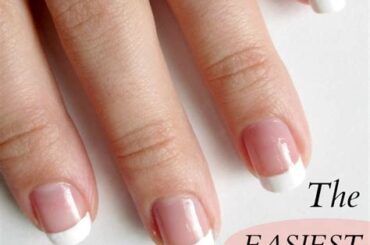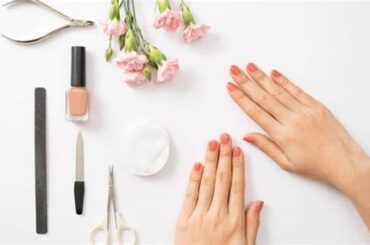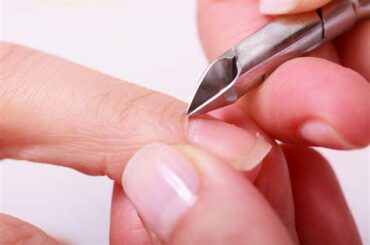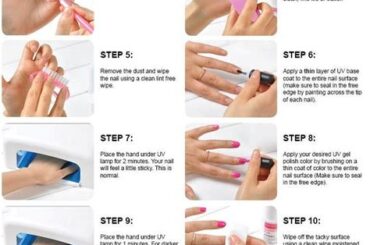Brittle Nails: Causes and Solutions
Brittle nails can be a frustrating problem to deal with. Not only do they make your hands look unattractive, but they can also be painful and prone to breaking. If you’ve been struggling with brittle nails, you’re not alone. Many people experience this issue, and it can be caused by a variety of factors.
Causes of Brittle Nails:
- Nutritional deficiencies: A lack of essential vitamins and minerals, such as biotin, iron, and zinc, can contribute to the brittleness of nails.
- Excessive use of harsh chemicals: Regular exposure to strong cleaning products, nail polish removers, or gel manicures can weaken the nails and make them more prone to brittleness.
- Dehydration: When your body lacks moisture, it can affect the health of your nails as well. Dry nails are more likely to become brittle and break easily.
Solutions for Brittle Nails:
| 1. Maintain a balanced diet: | Include foods rich in biotin, iron, and zinc, such as eggs, nuts, leafy greens, and whole grains, to improve nail health. |
|---|---|
| 2. Avoid harsh chemicals: | Try to minimize your exposure to strong cleaning products and opt for gentler formulations. Additionally, give your nails a break from nail polish and gel manicures from time to time. |
| 3. Hydrate your nails: | Keep your nails moisturized by regularly applying a nourishing cuticle oil or moisturizer. Also, make sure to drink plenty of water to maintain overall hydration. |
By following these solutions, you can improve the health of your nails and prevent further brittleness. However, if the problem persists or worsens, it’s always a good idea to consult a dermatologist or a healthcare professional for proper diagnosis and personalized advice.
Yellow Nails: Causes and Effective Remedies
Yellow nails can be an unsightly and embarrassing condition that many people struggle with. While it may seem like a mere cosmetic concern, yellow nails can actually indicate underlying health issues. In this blog post, we will explore the causes behind yellow nails and discuss effective remedies to restore their health.
There are several possible causes for yellow nails. Fungal infections are one common culprit, with the fungus causing yellow discoloration and thickening of the nails. Poor hygiene practices, such as not cleaning the nails regularly or wearing dirty socks and shoes, can also lead to yellowing. Additionally, extended use of nail polishes or acrylic nails can cause the nails to turn yellow over time.
Now that we have identified the causes, let’s discuss some effective remedies to treat yellow nails. One of the first steps is to improve your nail hygiene. Make sure to clean your nails regularly and keep them dry to prevent fungal growth. If you frequently wear nail polish, give your nails a break from time to time to let them breathe and recover their natural color.
- Keep your nails clean and dry
- Avoid using nail polishes and acrylic nails excessively
- Apply a nail whitening solution or lemon juice to reduce yellow discoloration
- Moisturize your nails and cuticles regularly
- Consume a healthy diet rich in vitamins and minerals to promote nail health
Nail whitening solutions can be an effective way to reduce yellow discoloration. These solutions are readily available in pharmacies and beauty stores, and they work by bleaching the nails to restore their natural color. Alternatively, you can try using lemon juice, which has natural bleaching properties. Simply soak your nails in lemon juice for a few minutes daily and rinse off. Remember to moisturize your nails and cuticles regularly to keep them healthy and hydrated.
In conclusion, yellow nails can be a sign of underlying health issues or poor hygiene practices. By understanding the causes and implementing these effective remedies, you can restore the health and appearance of your nails. Remember to prioritize good nail hygiene, avoid excessive use of nail polishes, and try using nail whitening solutions or lemon juice to reduce yellow discoloration. With these simple steps, you can proudly show off your healthy and beautiful nails once again.
Split Nails: Understanding the Reasons and Finding Solutions
Are you struggling with split nails and wondering what might be causing this frustrating issue? Split nails can be a source of embarrassment and discomfort, but fortunately, there are solutions available to help restore the health and strength of your nails. In this blog post, we will explore the causes of split nails and discuss effective remedies to help you overcome this common problem.
Before we dive into the solutions, let’s take a closer look at the reasons behind split nails. Splitting can occur due to various factors, including trauma, nutritional deficiencies, excess exposure to water or harsh chemicals, and certain medical conditions. Trauma to the nail, such as hitting it against a hard surface or using the nails to open objects, can weaken the nail plate and lead to splitting. Additionally, deficiencies in key nutrients like biotin, iron, and zinc can affect the overall health of your nails and make them more prone to splitting.
Now that we understand the underlying causes of split nails, let’s focus on finding effective solutions to combat this issue. First and foremost, it is essential to keep your nails well-hydrated. Moisturizing your nails and cuticles regularly with nourishing oils or creams can help prevent dryness and brittleness. Additionally, wearing gloves when doing household chores or using harsh chemicals can protect your nails from further damage.
Including nutrient-rich foods in your diet can also play a significant role in improving the health of your nails. Foods such as eggs, spinach, salmon, and almonds are excellent sources of biotin, iron, and zinc. Incorporating these into your meals can support the growth and strength of your nails. Moreover, considering supplements, under the guidance of a healthcare professional, can be beneficial for addressing any nutritional deficiencies you may have.
- Avoid excessive filing and buffing of your nails, as this can weaken them further.
- Use a non-acetone nail polish remover to prevent drying out your nails.
- Consider using a strengthening nail polish or a nail hardener to provide additional support.
- Keep your nails trimmed and avoid long lengths that are more prone to splitting.
It is important to note that if your split nails are persistent and accompanied by other symptoms, such as pain, redness, or swelling, it is advisable to consult a healthcare professional. They can help determine if there are any underlying medical conditions contributing to the issue and provide appropriate treatment.
In conclusion, understanding the reasons behind split nails is the first step towards finding effective solutions. By taking care of your nails, providing them with proper hydration, and addressing any nutritional deficiencies, you can promote their health and strength. Remember to avoid unnecessary trauma and consider using strengthening products to support your nails. With patience and consistent care, you can regain strong and beautiful nails.
Peeling Nails: Causes and Ways to Restore their Health
Having peeling nails can be quite frustrating and can make your hands look less appealing. Peeling nails occur when the layers of the nail plate start separating from each other, leading to flaking and peeling of the nail surface. There can be various causes behind peeling nails, and understanding these causes is essential in finding effective solutions to restore their health. In this blog post, we will explore the common causes of peeling nails and discuss some ways to promote nail health and prevent further peeling.
Causes of Peeling Nails
Peeling nails can be a result of several factors, including:
| Causes | Description |
|---|---|
| Excessive exposure to water | Constant contact with water, such as frequent handwashing or dishwashing, can weaken the nail structure and cause peeling. |
| Harsh chemicals | Nail products, cleaning agents, or certain salon treatments that contain harsh chemicals can damage the nails and lead to peeling. |
| Underlying health conditions | Medical conditions like thyroid disorders, psoriasis, or fungal infections can affect nail health, causing them to peel. |
| Poor nutrition | A deficiency in essential nutrients such as biotin, iron, or zinc can weaken the nails, making them prone to peeling. |
Ways to Restore Nail Health
To restore the health of peeling nails and prevent further damage, consider the following tips:
- Keep nails moisturized: Regularly apply a nourishing cuticle oil or cream to keep the nails hydrated and prevent dryness, which can lead to peeling.
- Protect nails: Wear gloves while performing household chores or working with chemicals to minimize direct contact and potential damage to the nails.
- Avoid excessive water exposure: Limit exposing your nails to water for prolonged periods and use gloves when washing dishes or engaging in activities that involve frequent contact with water.
- Follow a balanced diet: Ensure your diet is rich in nutrients like biotin, vitamins A and C, iron, and zinc, as they play a crucial role in maintaining nail health.
- Choose gentle nail products: Opt for nail polishes, removers, and treatments that are free from harsh chemicals to minimize the risk of nail damage and peeling.
- Consider supplements: If your diet lacks essential nutrients, consult with a healthcare professional about incorporating supplements that can support nail health.
By implementing these tips and making mindful choices, you can restore the health of your peeling nails and promote overall nail strength. Remember, consistency is key, so be patient and give your nails the care they deserve.
Ridged Nails: Understanding the Causes and Treatments
Are you tired of dealing with ridged nails? Do you find yourself constantly trying to hide your nails and feeling self-conscious about their appearance? If so, you’re not alone. Many people struggle with ridged nails, and it can be frustrating to find the cause and the right treatment. In this blog post, we will explore the various causes of ridged nails and discuss effective treatments that can help restore their health.
Causes of Ridged Nails:
There are several factors that can contribute to the development of ridged nails. Here are some of the most common causes:
- Aging: As we age, our nails naturally become more prone to ridges and other imperfections. The natural process of aging can cause a decrease in the production of collagen and elastin, leading to the development of ridges.
- Nutritional deficiencies: A lack of essential vitamins and minerals in your diet can also contribute to the appearance of ridged nails. Nutrients such as biotin, vitamin E, and iron are crucial for maintaining healthy nails.
- Dehydration: Not drinking enough water can also contribute to ridged nails. When your body is dehydrated, it can affect the health and appearance of your nails.
- Injury: Trauma or injury to the nail bed can cause ridges to form as the nail grows back. This can include injuries such as slamming your finger in a door or excessive use of manicure tools.
Treatments for Ridged Nails:
Fortunately, there are several treatments available to help improve the appearance of ridged nails. Here are some effective remedies:
| Treatment | Description |
|---|---|
| Moisturizing | Keeping your nails and cuticles well-moisturized can help minimize ridges. Apply a nourishing nail oil or cream daily to hydrate your nails. |
| Dietary Changes | Ensuring you have a well-balanced diet rich in essential nutrients can improve the health of your nails. Include foods high in biotin, vitamin E, and iron, such as eggs, nuts, spinach, and lean meats. |
| Regular Nail Trimming | Trimming your nails regularly can help prevent further damage and ridges. Use a gentle file or nail buffer to smooth out the surface of your nails. |
| Avoiding Harsh Chemicals | Avoid exposing your nails to harsh chemicals found in cleaning products and nail polishes. These chemicals can weaken the nails and contribute to the formation of ridges. |
By understanding the causes of ridged nails and implementing these treatments, you can improve the overall health and appearance of your nails. Remember to be patient, as it may take time for the ridges to fade and new healthier nails to grow. Embrace the journey to healthier nails and enjoy the confidence that comes with them!
Frequently Asked Questions
1. Question: What causes brittle nails?
Answer: Brittle nails can be caused by a variety of factors such as excessive exposure to water, harsh chemicals, vitamin deficiencies, or underlying health conditions.
2. Question: Why do nails turn yellow?
Answer: Yellow nails can be a result of several factors including fungal infections, smoking, excessive use of nail polish, or certain medical conditions.
3. Question: What are the common reasons for split nails?
Answer: Split nails are often caused by excessive dryness, frequent exposure to water, nutritional deficiencies, trauma to the nail bed, or certain medical conditions.
4. Question: How can I restore the health of peeling nails?
Answer: Peeling nails can be restored to health by keeping them moisturized, avoiding excessive use of harsh chemicals, taking biotin supplements, and protecting them from trauma or injury.
5. Question: What causes ridged nails?
Answer: Ridged nails can occur due to aging, nutritional deficiencies, certain diseases, trauma to the nails, or even certain medications.
6. Question: How can I treat ridged nails?
Answer: Treatment options for ridged nails include keeping them moisturized, avoiding harsh nail products, taking vitamin supplements, and ensuring a balanced diet.
7. Question: Are there any home remedies for improving nail health?
Answer: Yes, there are several home remedies that can help improve nail health such as regularly applying moisturizing oils, using a protective nail hardener, maintaining a healthy diet, and avoiding excessive use of nail products.





